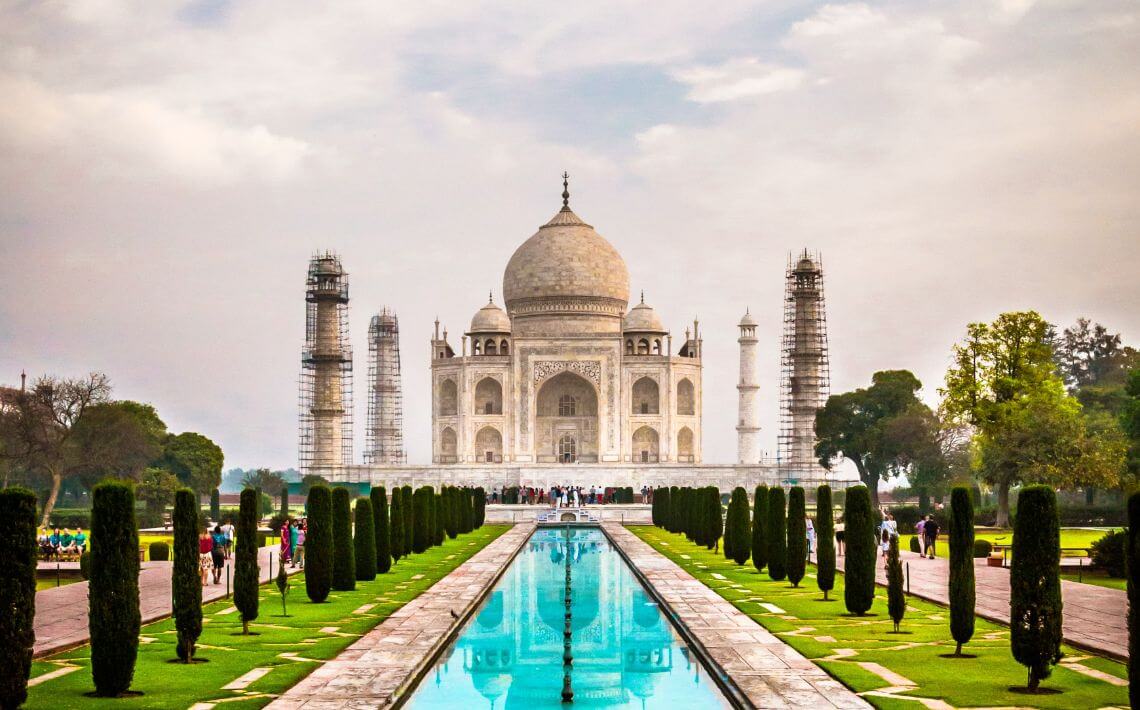The Taj Mahal, an emblem of love and architectural brilliance, stands as one of the most visited monuments in the world. Nestled on the banks of the Yamuna River in Agra, India, this UNESCO World Heritage site has captivated numerous travelers with its grandeur and intricate design. However, before one can lose themselves in the ethereal beauty of the Taj Mahal, reaching it efficiently is of paramount importance. This article will explore the closest airport to the Taj Mahal and provide insights on how to reach the iconic monument quickly and conveniently.
The nearest and most accessible airport for visitors heading to the Taj Mahal is the Agra Airport (AGR), formally known as Kheria Airport. Located approximately 7 kilometers away from the historical site, the airport serves as a convenient gateway for both domestic and international travelers. While Agra Airport is relatively smaller compared to other airports in India, it plays a significant role in accommodating the influx of tourists eager to marvel at the Taj Mahal.
Agra Airport offers flights primarily from major Indian cities such as Delhi, Mumbai, and Varanasi. Travelers arriving from international destinations typically have to connect through these Indian hubs. Given the growing popularity of Agra as a travel destination, expect increasing flight options in the years ahead. Once you land at Agra Airport, you are already just a stone’s throw away from experiencing one of the world’s greatest wonders.
Upon arrival at Agra Airport, navigating your way to the Taj Mahal is a breeze. Numerous transportation options are available, each offering varying levels of comfort and convenience. First and foremost, taxis and auto-rickshaws can be found readily at the airport. Several reputed taxi services offer pre-booked rides, ensuring a seamless transition from your flight to your destination. Be cautious with local transportation, and opt for authorized taxis to guarantee safety and fair fares.
For those who prefer a more personalized touch, consider booking a private car service or relying on ride-hailing applications such as Uber. These services not only offer convenience but also allow you to relive the excitement of your journey by driving through the vibrant streets of Agra. As you approach the Taj Mahal, feel free to immerse yourself in the sights and sounds of the city, marking the beginning of your adventure.
As you make your way toward the Taj Mahal, it’s essential to take into account various routes to optimize your travel time. The primary road leading directly to the monument is Rajamandi Road, which connects to Fatehabad Road. Expect traffic congestion at peak hours, particularly during weekends and public holidays when tourists flock to the site. To circumvent delays, aim to travel during weekdays and early hours. This way, you can enjoy a more tranquil entrance to this magnificent mausoleum.
Moreover, Agra is well-connected by road and rail, making it feasible to consider alternative travel strategies. The city boasts a robust infrastructure, with reasonably priced bus services and nearby railway stations offering connectivity to major Indian cities. While these options extend travel time, they do present an opportunity to mingle with the locals and experience authentic Indian culture. Journeying through Agra by train or bus can ultimately transform your trip into a fascinating exploration of the region.
Unlike many other tourist destinations, the allure of the Taj Mahal extends beyond its majestic facade. Visitors are often enraptured by the tales of love associated with its creation. Built by Mughal Emperor Shah Jahan in memory of his beloved wife Mumtaz Mahal, the story of the monument is steeped in emotion. Every intricate detail speaks to the depth of Shah Jahan’s devotion, a poignant narrative that transcends time and resonates with many. This narrative adds layers of meaning to your visit, inviting contemplation and reflection amid the hustle and bustle of tourism.
As you approach the iconic white marble structure, take a moment to grasp the scale and artistry of the monument. The reflection pool, perfectly aligned with the Taj Mahal, serves as a reminder of its ethereal beauty. With each passing moment, the changing light of the day casts mesmerizing shadows and transforms the monument’s appearance. Therefore, it’s wise to plan your visit around dawn or dusk to witness the Taj Mahal bathed in soft hues, creating a breathtaking visual experience.
Once inside the Taj Mahal complex, allow yourself to wander along the manicured gardens and explore the various angles from which the monument can be admired. Each perspective offers a unique glimpse into the architectural mastery that characterizes this world-renowned structure. Engaging with local guides can also enrich your experience as they convey fascinating anecdotes and obscure facts that often go unnoticed by the casual observer.
Concluding your visit to the Taj Mahal does not mean the end of your exploration of Agra. The city is home to a plethora of other historical sites and culinary delights. Don’t miss the chance to discover the Agra Fort, a UNESCO World Heritage site that provides not only an exquisite example of Mughal architecture but also offers stunning views of the Taj Mahal from its ramparts. Furthermore, indulge in local Agra delicacies such as petha (a sweet made from ash gourd) and explore the bustling markets that reflect the city’s rich cultural tapestry.
In summary, while the closest airport to the Taj Mahal is Agra Airport, navigating your way to this architectural gem can be quick and efficient. With various transportation options at your disposal and a plethora of experiences awaiting you, the journey to the Taj Mahal promises to be unforgettable. By planning strategically and immersing yourself in the local culture, your visit to the Taj Mahal will be more than just sightseeing — it will be a poignant voyage through history, love, and artistry.
